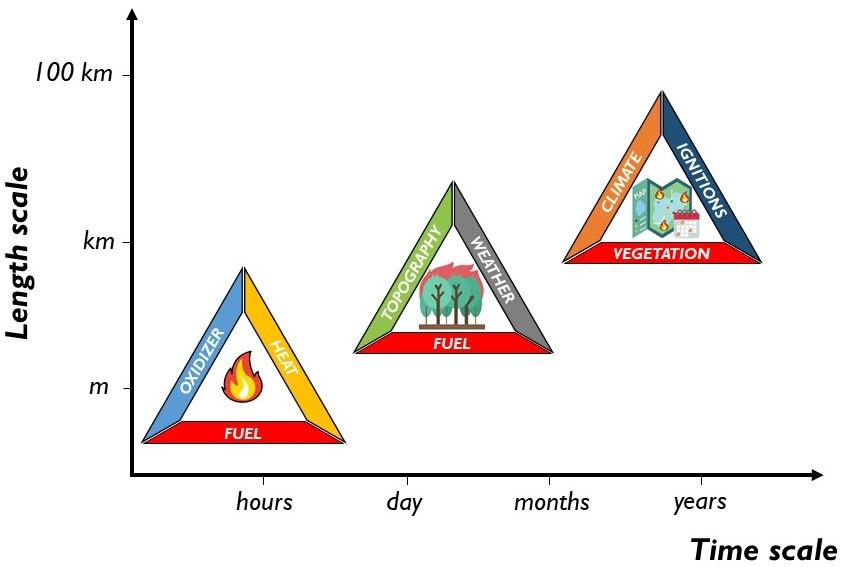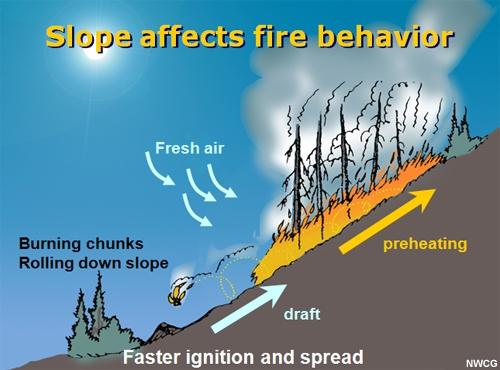Fire Science Background
Three basic "ingredients"
Fire is a dynamic process that requires three elements: fuel, oxidizer, and heat. Plants, artificial materials, and even buildings can be considered fuels, and are often classified based on their fire hazard and flammability. A fuel burns by reacting chemically with an oxidizer (usually oxygen in the air). Because these reactions occur at high temperatures, the heat source is the third essential component of a fire. While the initial energy needed to start a fire can come from ignition sources, once flammable materials begin to burn, they generate enough heat to sustain the process until all fuel has been consumed. This can be seen as a feedback loop in which the heating source is both an input and an output (see diagram below). In addition to heat, fires emit particulate matter (PM), as well as gaseous emissions such as carbon dioxide (CO2).
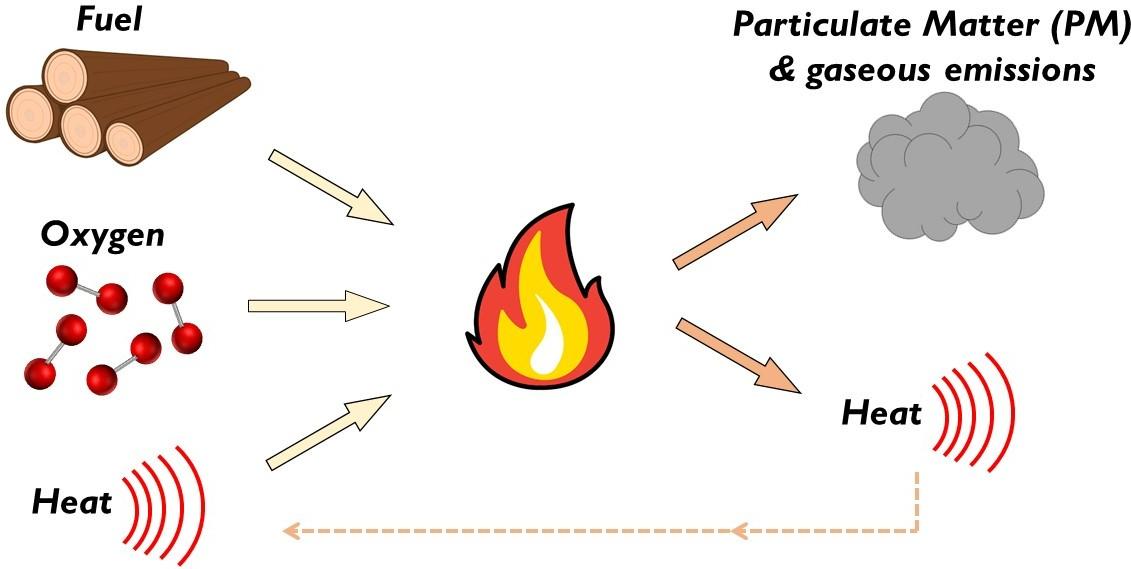
The relation between fuel, oxidizer, and heat is often indicated with the fire triangle (see figure below). By removing any of these components, the fire will extinguish.
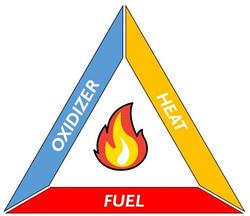
How does a fire spread?
The fire triangle serves as a tool for understanding fire, but it does not explain how the fire will respond to its local environment. A fire, for instance, can spread quickly through grass and grow in size and intensity if it comes into contact with more flammable materials. Wildfires can also spread rapidly if embers are blown ahead of the main fire, causing new fires to start. Embers are small pieces of plants, trees, or buildings that can be carried for miles ahead of a fire by the wind. Three factors significantly influence fire behavior: fuel availability, weather conditions, and terrain topography. Similar to the fire triangle, we can define a triangle for fire behavior, as
illustrated below.
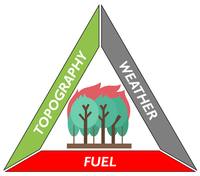
The fuel effect varies largely according to its properties and flammability conditions (type of vegetation, moisture, etc.). Weather conditions, such as wind speed, relative air humidity, and temperature, can either aid or inhibit fire growth. The wind directly affects fire behavior, but temperature and humidity also have a large impact on fuel conditions. Furthermore, large fires can "create their own weather" due to the upward motion of the fire plume interacting with the external wind. Topography also affects weather conditions, like changing wind patterns in canyons or affecting the vegetation moisture content on either side of a hill. Additionally, topography can directly influence how the fire spreads; for example, on steep slopes an upward spreading fire preheats fuel on its path, as illustrated below, causing it to spread more rapidly (see figure below from National Wildfire Coordinating Group).
The Fire regime: comparing multiple fires
So far, we have looked at the early stages and growth of a single fire, but how can we compare multiple fires? In a particular region, multiple fires can occur over several decades, and their intensity can vary based on local factors. Climate, ignitions, and vegetation determine the fire regime, which describes the frequency and severity of fires.
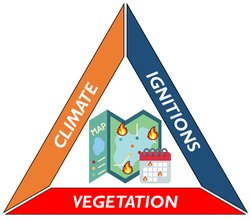
Climate and vegetation are linked; plants have adapted to regional characteristics (water, temperature, soil content, etc.), including fire, over millennia. Fire-prone ecosystems generally experience frequent and low-intensity fires.
As the third determinant of fire regimes, ignitions are defined as their distribution and their nature over time. Naturally occurring ignitions (such as lightning) can occur, but they are most often caused by human activities on a landscape (such as farming, controlled burning, or accidentally).
Same problem, different scales
The fire triangle described the initial stage of a fire, which requires fuel, oxygen, and heat to be present in the immediate environment. Due to their larger scale, the factors affecting fire behavior (fuel distribution, weather, and topography) become tougher to control when the fire grows larger. Further, the timeline of the problem changes. While it takes minutes and hours to ignite a fire, the fire's behavior is affected over days and weeks. What about the fire regime? In this case, we are talking years, if not decades. Thus, the fire regime is determined by large-scale changes. Below is a graph showing how the different scales impact fire characteristics.
